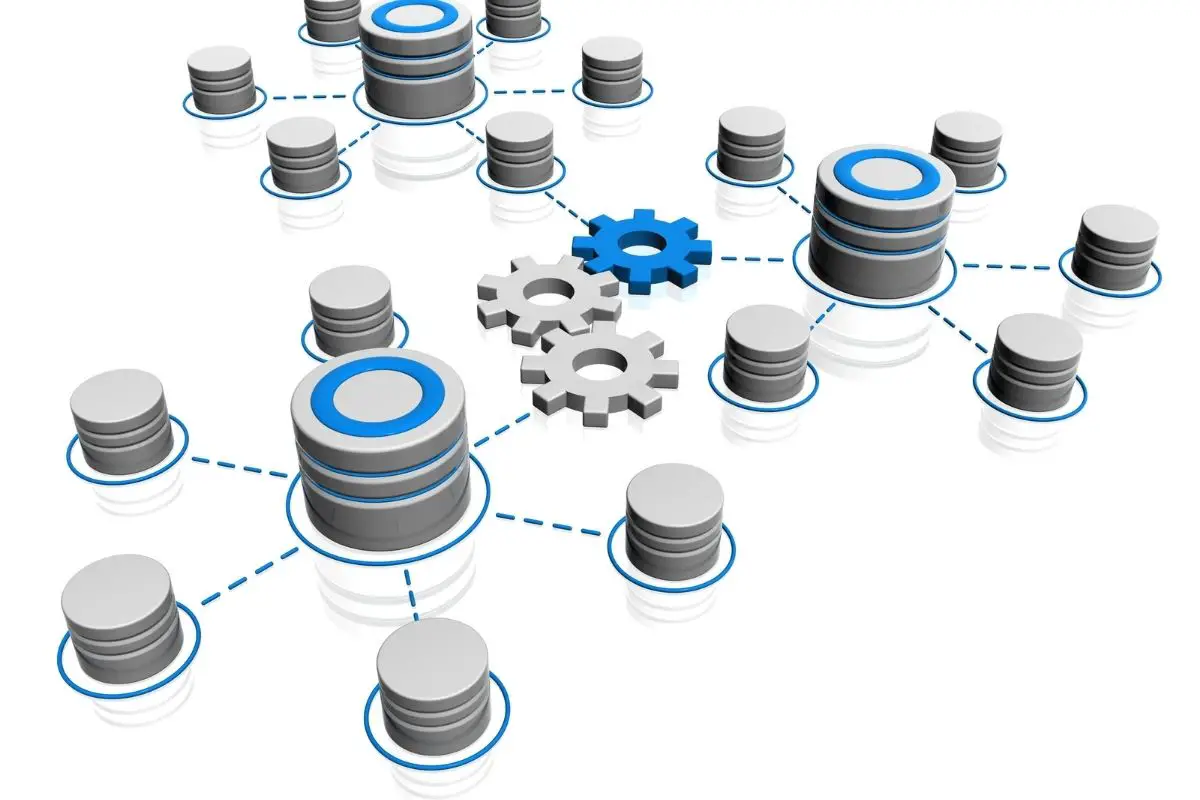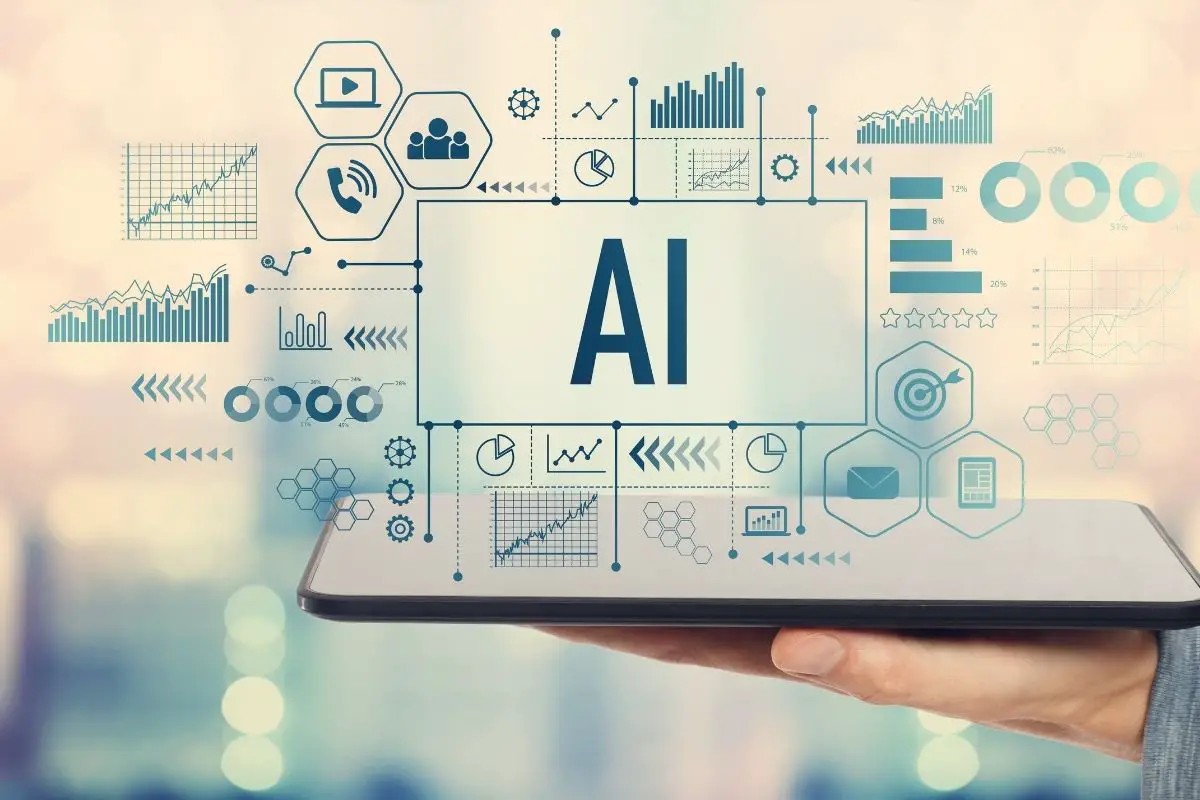Artificial intelligence was once a concept of science fiction but today, it is very much a part of life for very many. AI systems have come so far that they are now capable of making computers think somewhat like humans.

Although we have come a very long way in AI development over the last few years, we are still at the beginning of the journey. Therefore, we are still yet to see the true extent of what artificial intelligence possibilities are.
Coming back to AI being like a human brain, this is also evident in how it is made up. AI systems are made up of software and hardware, much like the human brain.
To think that AI systems can imitate the way in which a human brain works in 2022 is astounding. After all, the first national AI conference only took place in 1987 in Stanford University. The advancements we see with this software and hardware are astonishing.
But, the question on many researcher’s lips, and AI enthusiasts is, “does AI start with software or hardware?” Just like the advancements in computer technology during the 1970s and 1980s, there is now an argument about which is more important – software or hardware?
Of course, both are needed for AI to function properly but the focus shifted towards software over the years after hardware became standardized in computer technology.
Today, though, chip companies are experiencing the same transition with AI. The true answer of whether AI starts with software or hardware may depend on what you need from AI and the budget you or a company has.
Read on as we discuss whether Artificial intelligence stems from software or hardware and how comparing it to the human brain can help us understand this technology better.
Artificial Intelligence – Software Or Hardware?
When we delve into the depths of AI technology, it can be argued that it is more of a software computer program rather than hardware. Its capabilities mean that it can allow computer systems to mimic human actions via a mixture of data patterns and insights.
AI systems use a range of technologies, including Deep Learning, Machine Learning, Natural Language Processing, and Neural Networking. It aids in the development of applications, too, such as Virtual Assistants, Chatbots, Image Recognition, and Voice Recognition, to name just a few.
When combined, AI and Machine Learning technologies help to provide users with certain features and functionalities to ensure their businesses run smoothly and easily.
Today, the AI cycle can capture a whole explosion of data before redistributing its intelligence to billions of end products, such as smartphones, cars, and computers. With AI innovation continuing, it is believed that there are three key areas where it will be traced back to – software, hardware, and data.
AI Software
When we look at Artificial intelligence and software, we can compare machine learning applications to factory operations.
By this, we mean that the user will input data into the software and the outputs will be predictions, like similar items that were initially inputted. An example would be when a customer wants to put relevant items into their shopping basket online.
Generally speaking, these outputs are not always correct. Therefore, the output’s quality needs constant monitoring. A good machine learning deployment should learn to limit or even reduce variations of its output from the preferred levels.
If a company wishes to implement machine learning technology, it will have to use a machine learning pipeline. A recent example is Uber using Michelangelo.

AI Hardware
When it comes to Artificial intelligence and hardware, specific technical frameworks are required when the demands of machine learning, in particular deep learning, are increased.
This links to the recent surge in new hardware that has presented fresh opportunities within the market. Such opportunities started with graphic processing units developed by Nvidia, followed by other companies, including Nervana Systems and Graphcore.
Take the Apple X phone as an example. This uses the first GPU solution developed by Apple, known as the A11 Bionic processor. Then, there is Huawei’s launch of their application processor combining CPU, GPU, and AI functions to further smart computing.
Moreover, Efinix launched Quantum programmable technology in 2018 which entailed using chips that pushed AI into smaller, more efficient points on the edge.
AI Requires A Great Deal Of Memory Bandwidth
Face recognition applications tend to require a large amount of memory bandwidth in order to generate high-quality images and test their algorithms repeatedly to ensure the rate of errors remains low.
To keep overall costs low, an AI model with a high bandwidth is required. Take Intel, for instance. Made by Xeon Phi processors, these have eight loads of HCDRAM memory, giving each package around 256 GB/s of memory bandwidth.
AI Utilizes GPU (Graphics Processing Unit)
AI uses GPUs to help speed up algorithms for machine learning. These days, machine learning models and deep learning algorithms are much improved when compared to how they used to be. This is mainly down to the use of modern GPU technology.
Many cores and fast shared memory are used by GPU technology, allowing for parallel processes to achieve increased computing. This newer technology also means it is now more possible than ever before to operate more cycles per GPU.
This is achievable because the number of training instances are increased. Also, up to date GPUs can also have a positive impact on the performance of other machine learning models as training on the CPU can take less time.
For algorithms that require a great deal of data, GPUs are extremely helpful. They are capable of performing many computations simultaneously as they have a lot of cores. Also, they are designed for parallel processing.
Thanks to these benefits, GPUs are considered a better option for machine learning applications when compared with CPUs.
They can deal with very large datasets without the need of a large amount of CPU memory. This new technology can also make it simpler for engineers and data scientists to work on various projects.
AI Derives Intelligence From Other Technologies
AI is continuously gaining cognitive powers. This has led many to ask, “when will it stop?” “How can it help solve real world issues?”
Many AI users and researchers believe that AI comes in two forms – Smart AI and Weak AI. Smart AI achieves its intelligence from getting information from other technologies.
Weak AI can not generalize what it can do. Therefore, it can not be used for complex tasks. Some examples include virtual assistant bots and industrial robots.
Yes, AI may take over jobs in the future, but those most at risk are those that are repetitive and are considered to not require much skill.
In other words, AI may result in these jobs being deemed unnecessary. Moreover, AI may aid in public health programs and solve issues around the world by collecting information.
In Summary
Whether it stems from software or hardware is up for debate, but the possible positive impacts of artificial intelligence are exciting but the negatives are equally frightening.
In today’s technological world, AI is driven by both software and hardware, and it is your budget and what you need from AI that may determine whether it starts with software or hardware.









Awesome
Thanks for this piece!
Howdy! I simply would like to give a huge thumbs up for the nice info you have got here on this post. I’ll be coming back to your weblog for more soon.
I’m usually to running a blog and i really appreciate your content. The article has really peaked my interest. I am going to bookmark your website and keep checking for new information.
Its onerous to find knowledgeable people on this matter, but you sound like you recognize what you’re talking about! Thanks